Teachers adjust their pace and goals based on reading the room.
We ask questions like
- who’s prepared?
- what’s clicking or not?
- what are students saying to each other?
- who’s engaged?
- who can help other students?
- who needs extra help?
- how’s everybody doing overall?
Those cues depend on face-to-face, synchronous interaction in a shared physical space, something we are all sacrificing to slow the spread of COVID-19. Yet, to facilitate effective peer feedback, teachers still need those indicators of engagement and helpfulness.
Designed by writing teachers and researchers, Eli Review’s analytics help teachers read the room in online peer feedback.
But teachers are also good at reading students’ work, their writing. Eli makes it easy to see all the pieces of the writing process, providing trends that simplify instructors’ next steps. To help teachers adjust their routines, we can help through documentation, hands-on experimentation, or consultation:
- Check out the many resources linked below.
- Participate in an Eli Review course as a student and then get instructor access: It’s free and offered monthly.
- Book a video conference with Melissa Graham Meeks, PhD, to walk through an Eli Review course together.
Who’s prepared?
Students need to be on-pace for peer review, and progress meters let instructors monitor how many students have submitted each step of the writing process. In each task, the roster indicates students’ submission status. Learn more about how to identify and follow-up with students who are missing work.
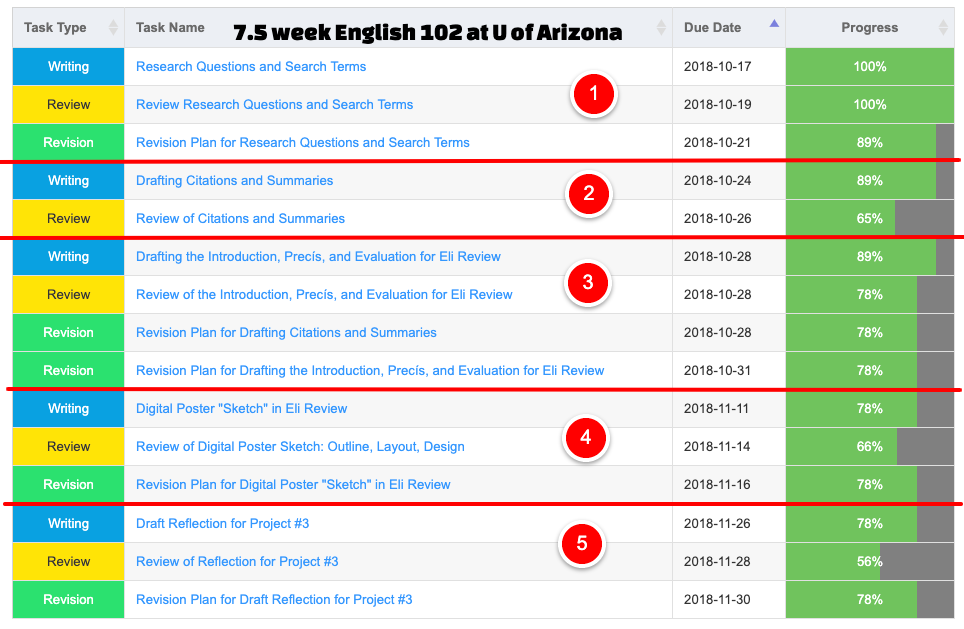
Green progress meters in this course dashboard from U of Arizona’s English 102 (7.5 weeks) show the percentage of students completing each task in the 5 projects.
What’s clicking or not?
Since teachers design their own survey-like questions in Eli Review (or borrow them from our free and open library), they get precise information about how well writers are meeting expectations. When matched with items on a rubric or other learning goals, teachers can quickly tell from these results the areas they need to spend more time. Learn more about designing reviews that produce actionable data.

For each student and the class as a whole, instructors can tell the percentage of reviewers who agree that drafts met the requirements.
What are students saying to each other?
Teachers walk around the room, checking in on group conversations. In Eli, instructors can eavesdrop using the comment digest. Every comment between every student is visible and sortable—something Blackboard, D2L, and Canvas can’t do. Learn more about using the comment digest to save time in responding to student work.
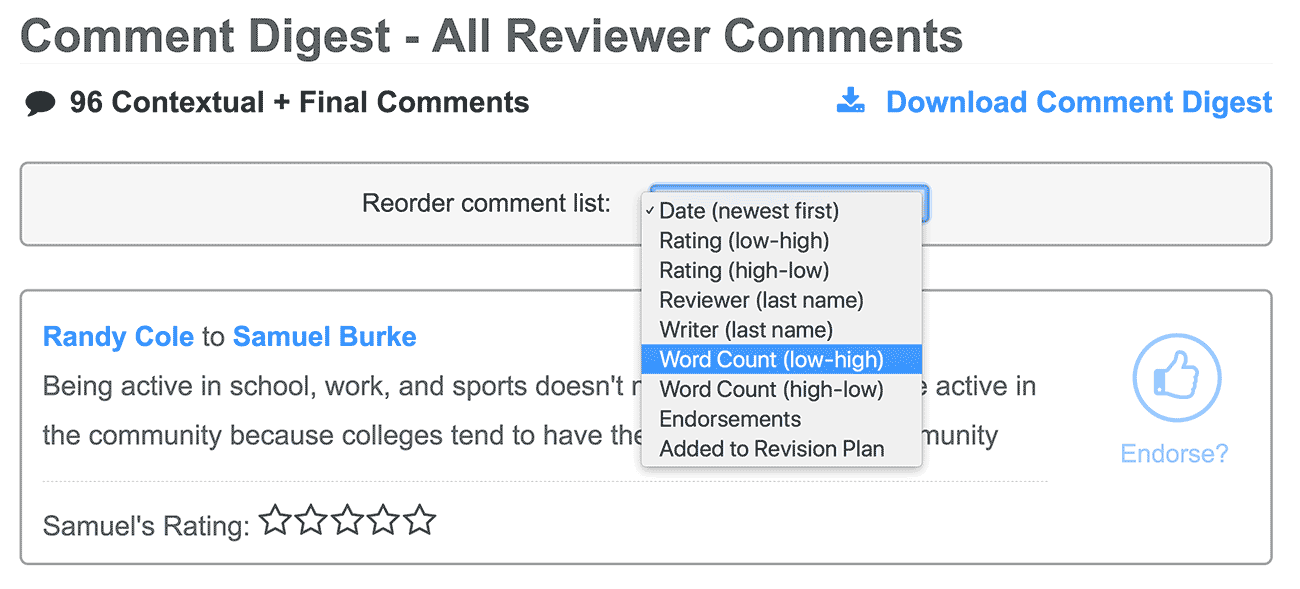
Sorting the comment digest by word count is a quick way to know if students who aren’t saying much are still being helpful. Other sort options such as by helpfulness rating or if added to revision plan let instructors know what feedback students value.
Who’s engaged?
Students who can talk to peers about the criteria are best able to apply them to their own work. Bill Hart-Davidson calls it giver’s gain. But if students don’t have much to say in feedback, it indicates that they may lack knowledge, confidence, or motivation. Helping these students find their voice puts them on track to improve. Learn more about teaching students to give helpful feedback.
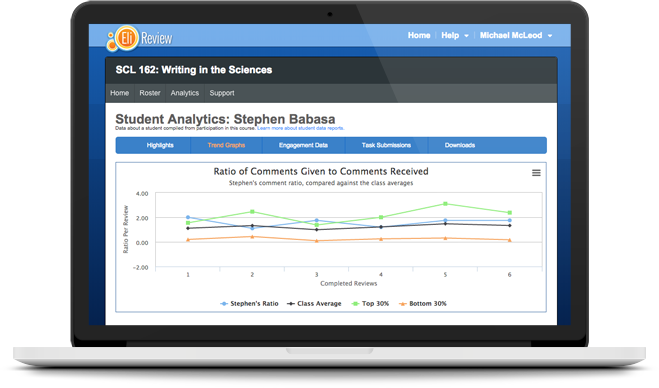
Stephen’s contributions as a reviewer started out as average but quickly move to be above the trend line for the top 30%.
Who can help other students?
Superpeers, those students who go the extra mile to explain the problems and solutions to other students, are crucial for the success of peer learning. These exemplar reviewers help raise the level of conversation, especially for students in the middle. Eli helps teachers quickly identify the superpeers and make sure they are grouped to help others in the class. Learn more about using helpfulness ratings for Learn more about using helpfulness ratings for students and teachers.
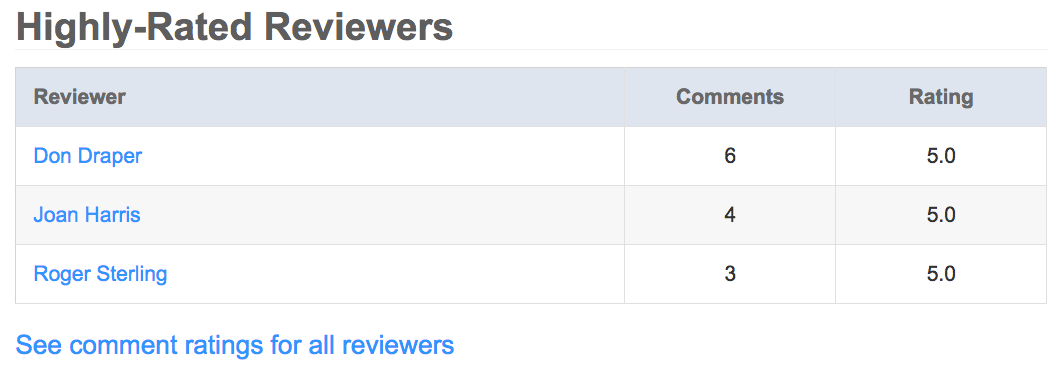
Writers rate the helpfulness of each comment. Based on these helpfulness ratings, the top three reviewers are highlighted so instructors can use their work as models.
Who needs extra help?
Maybe the most important question of all can also be the hardest to answer when classes move online: who needs your help? Students who are missing work, whose drafts are missing criteria, who are not giving/getting enough helpful feedback won’t succeed without extra help. In a class of 25 or 500, Eli’s analytics make it easy to spot those who are struggling. Learn more about using evidence-based teaching strategies.
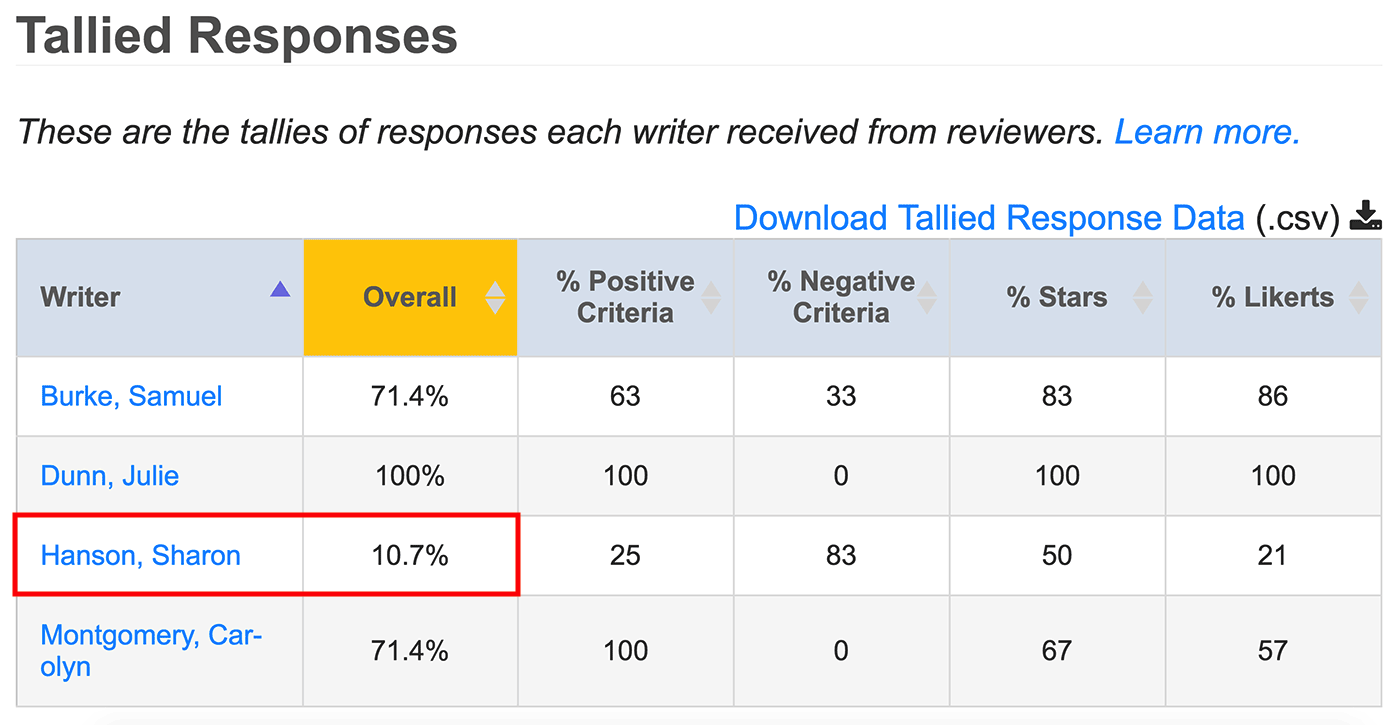
Tallied responses show the total number of peer votes earned compared to the total possible, giving instructors a perspective on the quality of the draft.
How’s everybody doing overall?
A successful peer response day in a face-to-class means a busy, noisy classroom. Eli can help teachers get a sense of this whole-class dynamic in online peer review. In peer learning, reciprocity—the amount of feedback students give compared to the feedback they receive—drives many of the other indicators of feedback quality. Bringing more students into balance as a givers and receivers improves the feedback culture. Learn more about how reciprocity metrics can guide your interventions.
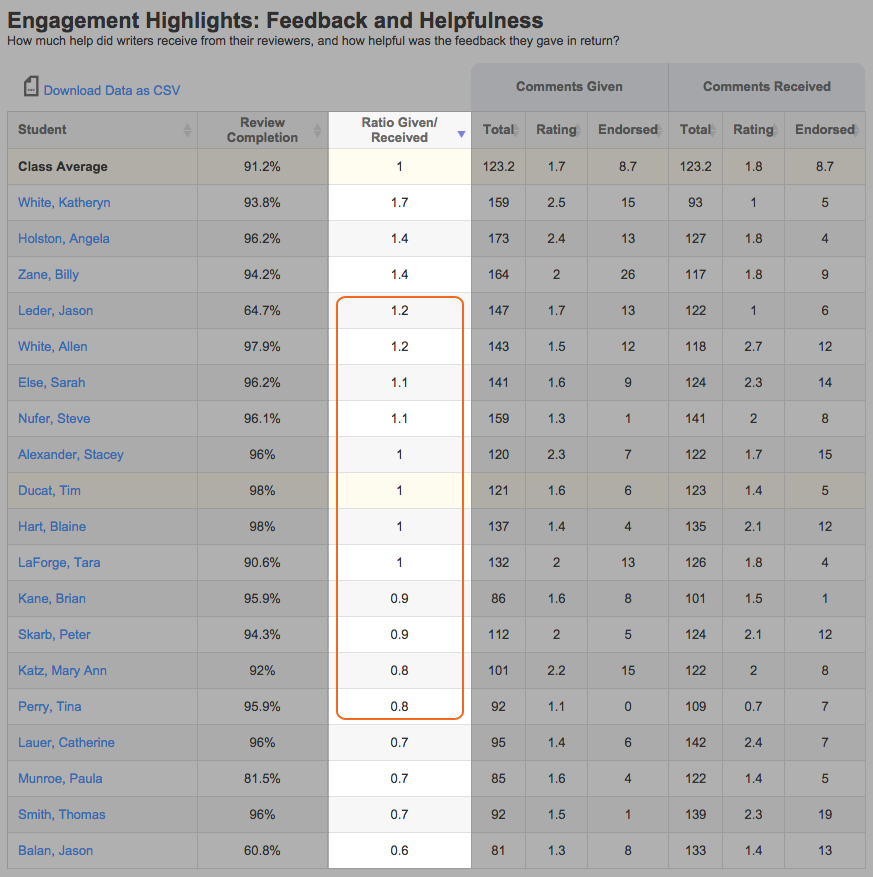
Don’t Take Our Word For It
Peer learning is a bit like broccoli: It’s good for you more than good to you, especially the first bite. This is true for students as well as instructors.
New routines are hard, but once you learn to read the room in online peer feedback, you’ll find that it saves you time and improves your ability to tune into students’ needs.
Using Eli has absolutely stretched me as an instructor. There are things that I did in print forms . . . that I’m now doing in Eli. Eli has made me realize that I wasn’t really taking enough time to look at comments with students. Taking that extra step of saying, “Okay, this comment was highly rated as being very helpful. Let’s look at the characteristics of it.”

Director of the Center for Engaged Learning
Professor of English: Professional Writing & Rhetoric
Elon University
Explore Our Resources
Watch this 4-min video about pasting in your writing assignment, designing a review task using a template, and editing groups to assign peer review. Or, read about creating tasks using templates and editing groups.
We cover best practices in 15 minutes for using Eli’s features to build a culture of helpful peer feedback

